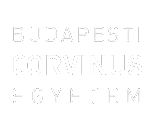Mesterházy, Martina (2021) “May the Buzz be with you” The examination of motives behind eWOM generating behavior among Hungarian film reviewers. BA/BSc szakdolgozat, BCE, International Study Programs. Szabadon elérhető változat / Unrestricted version: http://publikaciok.lib.uni-corvinus.hu/publikus/szd/Mesterhazy_Martina.pdf
|
PDF
- Requires a PDF viewer such as GSview, Xpdf or Adobe Acrobat Reader
402kB |
Szabadon elérhető változat: http://publikaciok.lib.uni-corvinus.hu/publikus/szd/Mesterhazy_Martina.pdf
Absztrakt (kivonat)
The aim of this thesis is to examine a particular aspect of the relationship between two relatively new and modern phenomena – electronic word-of-mouth (eWOM) and the film industry – in more depth. The research seeks to explore the conscious and subconscious motivations of individuals who engage in eWOM providing behavior, focusing not only on the driving forces behind their activity but also on the factors that make a motion picture more likely to become the subject of online word-of-mouth advertising. For a number of reasons, the study is concentrated on the Hungarian reviewers. Due to no similar research having been executed on the topic in the past, I considered it important to address it, as it can be observed that WOM - regardless of whether it is electronic or traditional - is currently more of a foe than a friend to Hungarian filmmakers. This can be concerning as the deteriorated image of the Hungarian movies caused by the negative and/or the lack of WOM makes it harder for them to be profitable. The research was conducted in the hopes of providing guidance for marketers on how to encourage their so-called talkers to formulate word-of-mouth advertising in an online environment for their benefit, and also for the filmmakers on how to facilitate the work of the marketing department by considering the creation process from a business point of view from the beginning – and by these contributing to the restoration of the damaged image to its old glory. To achieve this, I formulated two main questions to which the thesis seeks answers: (1) “What motivates Hungarian moviegoers to express their opinions online?” and (2) “What are the factors that make a movie worthy of comment?”. The following structure is used in pursuance of attempting to find answers to these issues: to begin, in the scope of the theoretical framework, the concept of eWOM is presented in broad terms, outside of the film industry, with particular emphasis on the consumers’ motives for creating online reviews, as well as corporations’ strategies for managing their online presence. Furthermore, the marketing activities of the film industry and the impact of eWOM activity on box office performance are also addressed, alongside the introduction of websites where customers can obtain information about motion pictures. Secondly, the crisis of the Hungarian film industry is discussed in other to demonstrate the necessity of seizing all means to resolve it. It is followed by the justification for the chosen research procedure. As there is no prior data available on the subject, primary research was necessary. The study does not aim to draw general conclusions but rather gain a deeper understanding of personal motives, which is not feasible to achieve using quantitative analysis; therefore, a qualitative approach was employed. In-depth interviews were conducted with the six members of the selected sample using a questionnaire designed to undercover both the conscious and subconscious motivations of the respondents. The methodology section also covers the introduction of these individuals and their selection procedure, as well as the presentation of the data analysis method. The fourth chapter contains the evaluation of the interviews. Firstly, the frequencies with which the factors - collected by Ismagilova (2020) – were implied by the interviewees are summarized in a table, then the most substantial supporting and dissenting statements are compiled. This chapter also explores the relationship between the motivational factors and different aspects of their activity (i.e., frequency, choice of the platform, valence). Finally, it also investigates the factors that make a movie buzzworthy, of which the most frequently mentioned ones were: (1) the story and the topic, (2) the characters, (3) the moral of the story and the message that it conveys, (4) the visual implementation, and (5) the ability to move out the viewer of their emotional and mental state. The final chapter summarizes the findings: based on the responses, it can be assumed that the factors identified and gathered in previous research (Ismagilova et al., 2020) are more or less relevant in the film industry as well, provided that the targeted “talkers” do not write their reviews to gain economic benefits. Information usefulness and customer satisfaction were found to be the most influential factors, closely followed by brand attitude and loyalty. In contrast, economic incentives and self-enhancement were the least indicated ones. This segment also describes the limitations of the research, further research possibilities, and the conclusion. Ultimately, we can conclude that unless a genuinely buzzworthy and enjoyable film accompanies the marketing activity and the encouragement, critics will either ignore it or formulate a negative, deterrent critique – neither of which is a favorable response. This essentially means that as soon as the creators decide to put their ideas on paper, the question and manner of marketability should emerge in their minds if they desire to reach and entertain wider audiences while also exploiting the power of eWOM.
| Tétel típus: | BA/BSc szakdolgozat |
|---|---|
| Témakör: | Marketing |
| Azonosító kód: | 14012 |
| Képzés/szak: | Business Administration and Management |
| Elhelyezés dátuma: | 13 Okt 2021 11:55 |
| Utolsó változtatás: | 29 Szept 2022 09:12 |
Csak a repozitórium munkatársainak: tétel módosító lap

